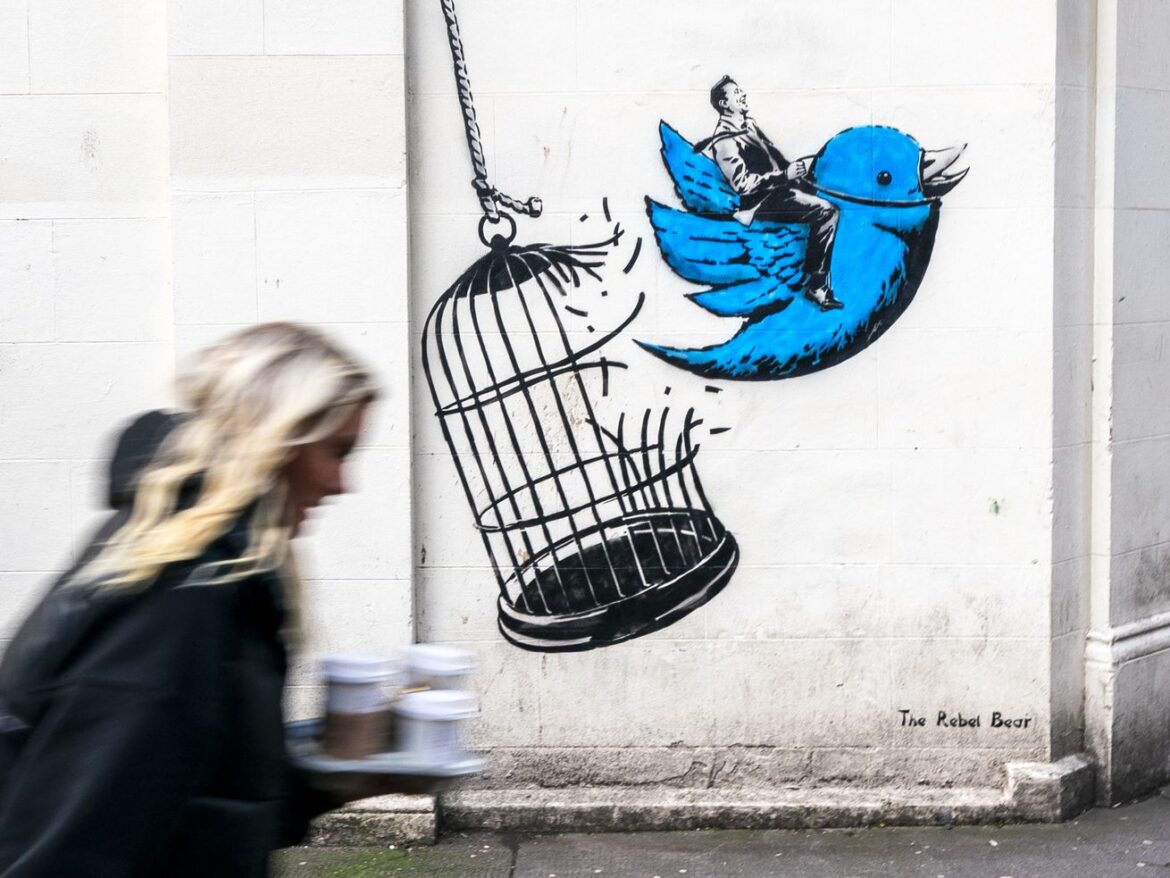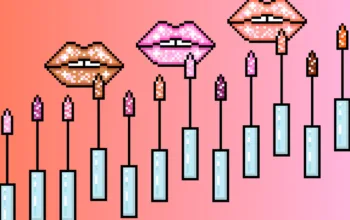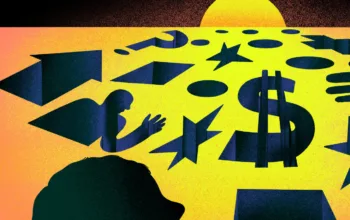Elon Musk wants to fill your Twitter feed with paid accounts being watched over by a crypto meme.
When Elon Musk took over Twitter, he said he wanted to protect its place as a “digital town square,” where ideas from all corners of the internet could flourish. But soon, if you want your voice to really be heard in the town square, you’ll need to pay.
Musk tweeted that, starting April 15, Twitter will only recommend content from paid accounts in the For You feed, the first screen users see when they open the app. It’s just one of several seemingly random changes Musk has been making to Twitter’s core user experience without explanation. He changed the Twitter homepage’s icon from its classic blue bird logo to “doge” — the cartoonish Shiba Inu dog meme linked to the cryptocurrency dogecoin — and is starting to insert random accounts people don’t follow into the their Following feed.
We don’t know exactly why the doge logo suddenly appeared at the top of the homepage, but there is one relevant piece of news people are pointing to: Elon Musk is currently facing a $258 billion lawsuit alleging that he ran a pyramid scheme to support dogecoin. Musk’s legal team asked a court to dismiss the dogecoin suit a few days before doge appeared on Twitter’s site.
It’s hard to make any real sense of Musk’s constant changes to Twitter, but one general trend, is that if you don’t start paying $8 a month for Twitter’s subscription plan, Twitter Blue, you’ll have a harder time on the app. For people tweeting, you’ll have less of a chance that your tweets will actually get seen, and for people viewing but not posting on Twitter, you’ll be seeing a lot more content from paid accounts, which currently make up only 0.2 percent of all users. After Twitter users started complaining about the new plan, Elon clarified that people you follow will also show up in the For You feed, but the main point still stands: Musk wants to turn your Twitter feed into a pay-to-play arena.
The introduction of random accounts in the Following tab added insult to injury. Users used to be able to escape the randomness of the For You feed by using the Following tab, which showed you accounts of people you followed ranked chronologically. The For You offered users an approximation of the old, pre-Musk Twitter experience, but now, even that’s essentially gone.
Musk’s plan is to fill your Twitter feed with a higher ratio of paid accounts, and is pressuring more free users to pay for what was once considered a given. This move is the next step in Musk’s plan to try to get more people to subscribe to Twitter Blue. Musk said that on April 1 he’d remove “legacy” verification checkmarks from notable accounts that had them for free, including news organizations, politicians, and researchers. On March 31, some major accounts like the White House and LeBron James said they would not be paying for a checkmark — not a good sign for the impending rollout. Many are concerned that it could become even easier for public figures who don’t pay for a checkmark to be impersonated.
The checkmark part of Musk’s plan has received a lot of attention — in part because it involves famous people — but it’s the changes to Twitter’s feed that are potentially just as, if not more, impactful.
That’s because Musk is changing the incentives to Twitter’s core product, its recommendation algorithms, to an extent that it could potentially fill the average user’s experience with lower-quality content.
“The notion that by virtue of being willing to pay $8 a month means that you are a higher-quality account or worthy of being verified is a really reductive analysis,” said Jason Goldman, a VP of product at Twitter from 2007 to 2010. “There’s plenty of people who are complete trolls and are looking to just get attention for ridiculous behavior for whom $8 a month is a pittance to pay.”
In his explanation of the upcoming feed change, Musk said that Twitter has to charge users to make sure people aren’t actually spam bots. But there’s a simpler reason that’s also driving this push: Twitter needs to make more money. The company, which is now valued at half of what it was when Musk bought it, is still bleeding advertisers that are put off by Musk’s antics. Not enough people have subscribed to Twitter Blue: There are only about 180,000 subscribers, according to the Information. They bring in roughly $28 million in annual revenue, less than 1 percent of the $3 billion Musk aimed to make in 2022. Now, in an effort to get more people to sign up for Twitter Blue, Musk is essentially threatening to make using the app harder for Twitter users who don’t pay.
Moreover, the fact that Musk is seriously proposing turning your Twitter homepage into a place where you don’t see tweets from the users you care about and only see the people who spent money shows how much he’s willing to compromise the basic utility of the app. He’s pushing an extreme version of an increasingly popular “pay-to-play” model for social media, one that goes against some of the basic ideas that made apps like Twitter popular in the first place.
Early signs that people are buying into Musk’s vision for social media are not looking good.
First of all, the company is already planning major exceptions: Twitter’s top 500 advertisers and 10,000 most-followed organizations keep to their checkmarks for free, according to a recent report in the New York Times. That eliminates a major pool of potential customers that Twitter may have wisely realized were not going to pay.
Some of the largest newsrooms in the country, like the New York Times, the Los Angeles Times, and Politico, have said they will not be buying a Twitter Blue verification for their company accounts (a one-year subscription for a company costs $12,000), nor do they intend to subsidize individual reporters’ subscriptions. In its rationale, the LA Times said that “verification no longer establishes authority or credibility.” A few celebrities, like Seinfeld star Jason Alexander, William Shatner, and Ice-T have recently joined other actors, writers, and comedians who previously threatened to leave if Musk took away their checkmark. If more famous people refuse to buy Twitter verification and subsequently find less value in Twitter, they could leave for other platforms.
Meanwhile, Twitter’s technical quality has been degrading since Musk took over. Features have been more frequently buggy, the site has had embarrassing outages, and source code has been leaked online.
“I think [changes to the For You feed and verification] are only going to expedite that decline and demise of a platform that is really in its death rattle right now,” said social media consultant Matt Navarra.
Even though Musk acquired Twitter to democratize it from the hands of elite users, in many ways his actions are doing the opposite.
A major part of social media’s appeal in the past two decades of its existence is the idea that anyone, from anywhere, at any time, could go viral — for better or worse. And in turn, users see the most compelling, “engagement”-worthy media. Companies like Meta, TikTok, and YouTube are in the business of carefully fine-tuning algorithms that recommend the content they know we’ll want to click, whether that’s cat videos, political debates, or beauty tutorials. A major part of Twitter’s appeal was about seeing random interactions between powerful people and everyday citizens, like someone seeing a tweet from a senator, replying to it, and actually getting a reply back.
If Musk starts making it harder for an average user to stumble on and participate in viral exchanges, he’s taking away from the basic democratic promise of social media.
Already, under Musk’s leadership, Twitter has been promoting certain content according to the whims of the company’s new owner. Twitter has recently boosted Musk’s own tweets, and for months it has boosted those of certain people the company designated as VIPs, like LeBron James, Ben Shapiro, and (somewhat surprisingly, since she’s a known foe of Musk) Rep. Alexandria Ocasio Cortez, according to recent reports in Platformer.
It’s important to note here that there’s a good chance Musk will not go through with this, given his track record of missing deadlines for major changes at Twitter. In the few months since he took over, Musk has promised to share revenue with creators (hasn’t happened). He’s warned for months that Twitter will remove blue checkmarks, but he hasn’t actually done it yet. As of Monday, April 3, Twitter still hasn’t seemed to remove checkmarks for legacy accounts, which could be because it’s reportedly a slow and manual process. There’s one exception: Twitter removed the checkmark on the account of the the New York Times, a frequent target of Musk’s media criticism.
Regardless of whether Musk executes his plans, he is to some extent doing what many social media platforms have often done in private: tinker with secretive algorithms and give special treatment to high-profile users. TikTok was found to be “heating” certain VIP user content, showing it more in people’s For You feeds. Facebook and Instagram have let celebrities get away with breaking the company’s policies. The two apps, which are owned by Meta, also recently started charging users for verification and some basic services like access to customer support.
But even if these companies give certain users benefits over others, they’re doing it within reason. Musk is pushing pay-to-play to the extreme. If he goes too far, celebrities and the everyday users who follow them could leave Twitter in a mass exodus. So far, though, they haven’t. Twitter’s biggest benefit is that there is no good Twitter alternative. The most viable contender, Mastodon, while popular with some journalists, hasn’t reached nearly the same level of mainstream appeal as Twitter.
Regardless, if Musk wants Twitter Blue to succeed, he’ll need to get celebrities and everyday people not just to stay on Twitter, but to pay for an $8-a-month subscription service.
We’ll see if his plan to turn Twitter into a for-sale popularity contest will work.
Update, April 3, 3:45 pm ET: This story, originally published on March 31, has been updated with new changes to Twitter’s Following tab and homepage logo.



